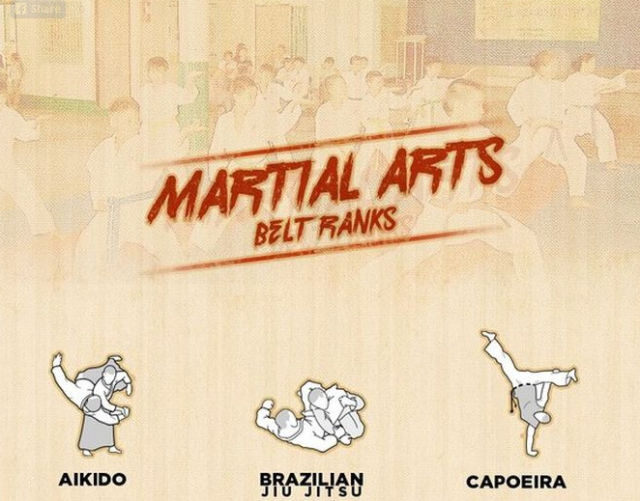Come Explore The Fascinating World Of Martial Arts, Where Ancient Customs Satisfy Modern-Day Efficiency - A Trip Right Into Background And Approach Waits For.
Come Explore The Fascinating World Of Martial Arts, Where Ancient Customs Satisfy Modern-Day Efficiency - A Trip Right Into Background And Approach Waits For.
Blog Article
Content By-Fyhn Francis
Enter the ancient world where martial arts were substantiated of necessity in varied regions. Societies crafted special combating designs linked with historical contexts. Strategies progressed over centuries via committed technique and social exchanges. where did martial arts originated , modern-day martial arts mix standard aspects for maximum efficiency. Philosophically, martial arts emphasize discipline, self-improvement, and harmony. Respect, humility, and equilibrium are foundational concepts leading professionals in the direction of development and strength. Explore the midsts of this abundant background and approach to uncover the profound influences forming this enduring discipline.
Beginnings of Fighting Style
Fighting style originated in different areas all over the world, progressing as sensible combat systems to resist dangers. These ancient combating designs were established out of need, with each society crafting strategies fit to their distinct settings and difficulties. From https://www.wlox.com/video/2021/04/28/live-report-martial-arts-pre-registration-aims-keep-kids-off-streets-out-trouble/ grappling arts of Jujutsu in Japan to the striking techniques of Kung Fu in China, martial arts were deeply intertwined with the historic, social, and social fabric of their corresponding societies.
In Japan, the samurai class refined martial arts like Kenjutsu, the art of the sword, which later progressed into the more promoted form of Kendo. Meanwhile, in Brazil, Capoeira became a blend of dancing and battle, created by enslaved Africans as a way to resist oppression. Each fighting style carries with it an abundant history and viewpoint, showing the values and ideas of individuals that exercised them.
As you look into the origins of martial arts, you uncover a tapestry of human resourcefulness, resilience, and the stubborn spirit of warriors throughout time.
Advancement of Techniques
Via centuries of method and refinement, battle techniques within different martial arts have actually undertaken an extensive evolution. From ancient designs like Martial art and Karate to much more modern techniques such as Brazilian Jiu-Jitsu and Krav Maga, the advancement of strategies has actually been driven by a combination of cultural impacts, sensible applications, and technical innovations.
One significant facet of this evolution is the cross-pollination of strategies in between different martial arts. As an example, techniques from typical Japanese Jiu-Jitsu were included into the production of Judo by Jigoro Kano in the late 19th century. This blending of designs has caused the development of hybrid martial arts like Mixed Martial Arts (MMA), which combine aspects of striking, grappling, and submission techniques.
In addition, the advancement of methods has actually been formed by the raising focus on performance and effectiveness in fight. Professionals have actually constantly sought to refine their techniques through extensive training, experimentation, and competitors, leading to the advancement of highly specialized and effective battling styles. Generally, the advancement of strategies in martial arts shows the vibrant nature of fight and the ongoing quest for renovation and development.
Thoughtful Foundations
Exploring the underlying philosophical concepts of martial arts offers insight into their core worths and leading ideas. At the heart of numerous martial arts self-controls is the idea of technique itself. By training your body and mind to act as one natural unit, you grow discipline that extends beyond the dojo or health club into everyday life. This technique includes respect, humbleness, and self-discipline, forming not simply your physical abilities however also your character.
An additional basic thoughtful structure in martial arts is the idea of continuous self-improvement. The trip of mastering a fighting style is nonstop, with practitioners continuously making every effort to much better themselves, both literally and psychologically. This concentrate on development cultivates resilience, perseverance, and a development attitude that can be applied to all aspects of life.
Moreover, martial arts emphasize the relevance of harmony and equilibrium. Methods are made to use an opponent's energy against them, highlighting the principle of generating and redirecting pressure as opposed to satisfying it head-on. This viewpoint reaches interpersonal partnerships, advertising calm resolutions and good understanding. By embracing which martial art is best for kids , martial artists not just enhance their fight skills however also cultivate a way of living fixated personal development, respect, and consistency.
Conclusion
To conclude, the background and approach of martial arts offer a rich tapestry of practice, discipline, and self-improvement.
Consider example the story of Bruce Lee, who changed martial arts by mixing different styles and philosophies to create his very own one-of-a-kind kind of Jeet Kune Do.
Via commitment and development, martial musicians remain to push boundaries and inspire others to reach their complete capacity both in combat and in life.
